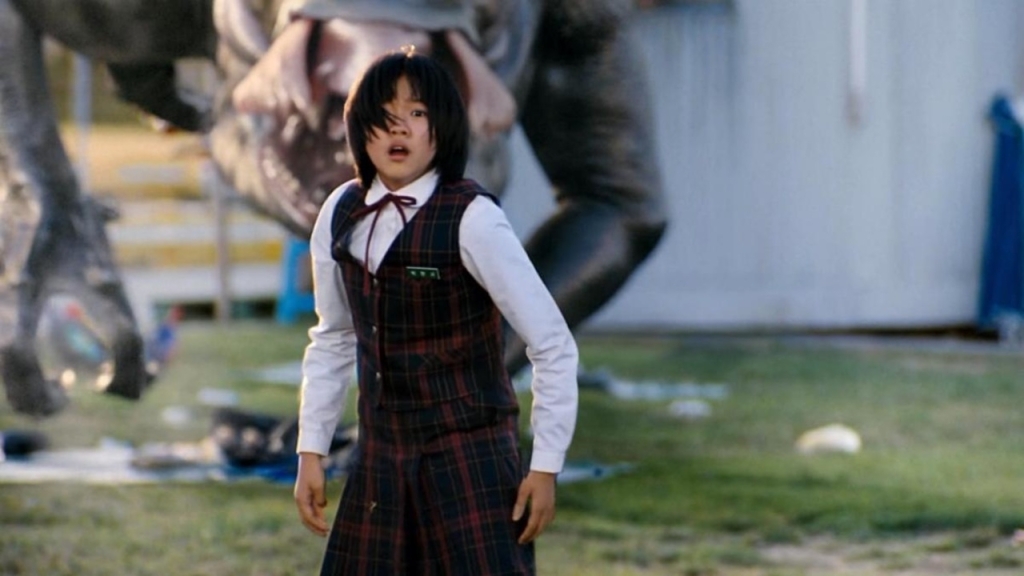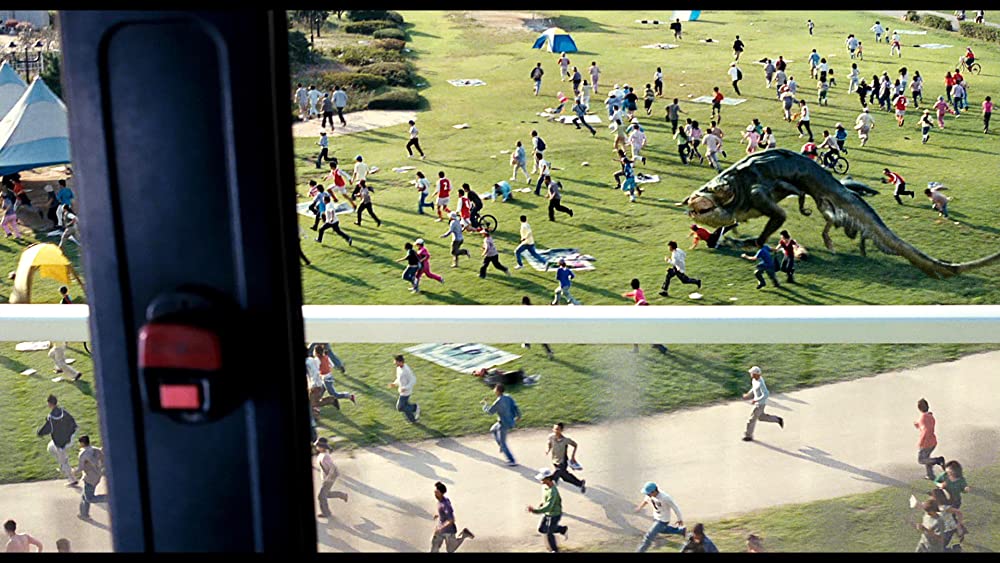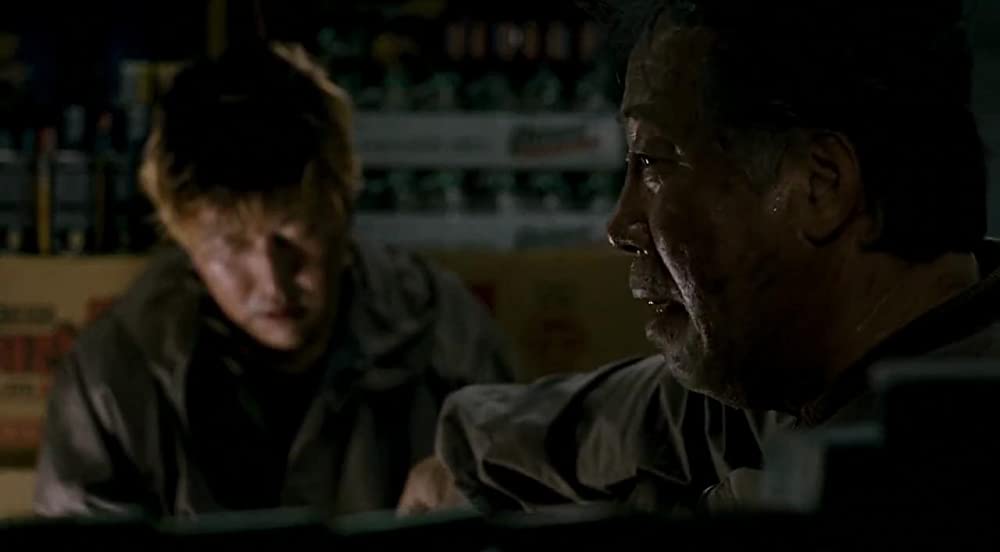
I was definitely not expecting to see anyone with a major hand in creature feature history take home the Academy Award for Best Picture within my lifetime, but the last few years gave us not one, but two. Of course, Guillermo Del Toro’s Oscar nod for The Shape of Water has the double validating effect (not that I need validation, especially not from the Hollywood fatcats) of being for an actual monster movie, even if a revisionist one, but Bong Joon-ho’s win with Parasite was notable on its own for being the first non-English, non-Western film to get the gold. That’s an impressive first to have on your resume! Joon-ho’s career has spanned over twenty years and various genres, producing many critically-acclaimed films in South Korea and abroad—but I can imagine that a lot of you reading this first heard of him back when his monster movie was making the rounds in the film festival circuit and attracting the attention of cult movie websites, as I did. Fifteen years later, and The Host is still a genuine classic, one of the most engaging and inventive monster movies in recent memory, with a stylistic and cultural specificity that remains singular.

One of the things that makes this movie stand apart is the seamless way it blends scenes of heightened reality and more down-to-earth ones. The opening scene, where a careless American scientist tells his Korean associate to dump tons of old formaldehyde down the drain, is simultaneously quite silly and very realistic (based on real events, as it happens), setting up the tone and the themes that will be showing up throughout the movie. The plot concerns the Park family, who have a diverse array of occupations: sister Nam-joo (Bae Doona, who has appeared in many of the Wachowskis’ more recent projects) is an Olympic-level archer (although she only gets the Bronze, as is brought up repeatedly), brother Nam-il (Park Hae-il) is a slick-dressed but seemingly unemployable college student, and the oldest brother Gang-du (Song Kang-ho, future star of Snowpiercer and Parasite) works the family-owned snack bar with his father (Byun Hee-bong, who would later appear in Joon-ho’s Netflix movie Okja) and his daughter Hyun-seo (Go Ah-sung, who also came back for Snowpiercer) along the banks of the Han River in Seoul. An average day for the goodhearted but bumbling and narcoleptic Gang-du is interrupted by the sudden appearance of a truck-sized amphibious abomination that jumps out of the river, and in the ensuing chaos the creature takes Hyun-seo beneath the water. The whole family comes together to grieve, only to be ushered in to a poorly-organized governmental effort to not only take control of the monster situation, but to quarantine a virus (which is directly compared to SARS, another mark of its era) that they think the monster spread among witnesses, with Gang-du especially affected through contact with the thing’s blood. The scene at the memorial for those who died in the attack, and specifically the way the Park family argues and thrashes around while mourning, is one of the best examples of a scene that is full of physical comedy and believable pathos, as is the subsequent incompetent actions by the government health representatives.

We soon learn that Hyun-seo is still alive, being kept by the mutant in a sewer somewhere along the Han with numerous other (mostly dead) humans it has picked up, and she is briefly able to use her cellphone (a flip phone! That takes me back), the one that she complained about earlier and that her father promised to replace with the change he was saving, to call her family, who then conspire to escape the hospital quarantine and find her. The scenes focusing on her, everything dingy and quiet compared to the much more manic scenes elsewhere, are played for horror, and the fact that both the characters and the audience know so little about the creature and its behaviours (except for its ability to swing around under bridges, which is a visually unique way for it to get around) adds a great deal of tension. The situation for her changes when a homeless boy is brought there with his dead brother (after we see them steal from the Park’s untended snack bar), and she is given even greater motivation to find a way out for both of them.
Despite being a monster movie—and monster movie more than willing to show its monster in full on a semi-regular basis—there’s a grounded feeling to it that gives it an impact and intensity that other, CGI-laden creature features do not. Many of those monster sequences are shot in a way that seem appropriately chaotic, focusing on the crowds of fleeing people and utilizing the unique urban riverside environment—the monster is probably at its scariest when its just a slightly blurry figure running behind someone. Given its ability to quickly appear and disappear, it also feels like an animal inhabiting its ecosystem, which makes its alien nature and the way it invades human spaces all the more unsettling. At the same time, Joon-ho shoots the entire movie in a very stylish way, where even dialogue scenes are colourful, full of detail, and photographed with purpose.

The Host shows that the humanity of its story is what makes a truly great monster movie. Gang-du and his family are a truly likeable bunch of characters, whose relationships are less dysfunctional and more eccentric, and the plot is less about dealing with the monster itself and more about what these people do when thrust into an unbelievable situation. I remember back around when The Host first released, one of the few complaints about it among English-speaking viewers was about the tonal changes, where the comedy abuts the much more serious scenes (that is apparently not uncommon in South Korean cinema, but I don’t have knowledge of it to say for certain), but to me the way those are integrated are one of the key things that makes this work, giving the audience a chance to sympathize with them and want to see them pull together in the face of tragedy. One good example is in the character of the elderly father, whose comedic character traits, such as his tendency towards trying to bribe his way out of problems, can play a part in more dramatic scenes as well, and his surprisingly fair-minded treatment of the seemingly incompetent Gang-du (whose lower status seems to have benefited his two younger siblings, if only because of parental guilt) leads to a particularly endearing monologue. Making them slightly exaggerated and goofy (but never flat and cartoonish, even during its triumphant movie finale) actually makes them much more believable as everyday people, and it’s much easier to take their emotional lives as seriously as the movie does.

“Slightly exaggerated” is also how you would describe the social commentary half of the movie, as the Parks and the other citizens of Seoul don’t just have to work around a monster, but human forces beyond their control. From that opening scene it’s pretty clear who the primary satirical target is, as the American government and military is repeatedly shown to care very little about how their actions are affecting the population of Seoul (in a scene where Gang-du breaks out of a mobile military hospital tent, he finds soldiers barbecuing), admit absolutely no responsibility for the situation, and are fully abetted by the muddled bureaucracy of their South Korean counterparts. Even the media is shown to be culpable, reporting on the death of US soldier (who had tried to help Gang-du fight off the monster during the initial attack) while making little to no mention of the dozens of dead locals. Their ill-considered corralling of the situation reaches its apex when the same scientist from the opening appears again, and explains (in English, evidently because he thinks his partner is the only one who understands it) that there is actually no evidence that the virus exists. Now, these days the idea of the government fabricating a virus story has unfortunate connotations (and a comedy scene of paranoid masked people at the bus stop is probably even more resonant than in the post-SARS period), but just remember that this came out fifteen years ago in a completely different context. This leads to the decision to douse the Han River area with a chemical called Agent Yellow to destroy the monster, and the connotations of that remains the same now as it did back then. In many ways, the implications of this plot are very reminiscent of the original 1954 Godzilla, but feels absolutely no need to pull any punches.

This is a movie there is clearly critical of international relations, and the sub-colonial ways the big powers direct the lives of foreign countries (just the presence of random, English-speaking Americans throughout this South Korean film is a deliberate reminder of this) even while causing the problems they are trying to “fix”, and there’s a subtle seed of environmental concern at the base of it, too, intertwining the two. After all, this is a monster created by careless dumping of chemicals into a river, one of those classic monster movie plotlines, which the American scientist assures his partner is “big enough” that their actions won’t have any significant effects. The fact that both the homeless population and student protesters (Nam-il used to be an activist and political belligerent, which comes in handy during the film’s climax) fits into this narrative neatly as well, as being the sorts of people concerned with the environmental effects. To be honest, despite me deciding to write about this movie specifically because that environmental angle makes it fit as a belated Earth Day eco-horror tie-in, it is really more flavouring rather than the most important component of the story—but its presence its there, and the flavouring it provides actually makes the more points even more effective.

The Host is ultimately a movie about people having to deal with the problems created by the people above them, but as both a monster movie and social satire, never once does it forget about the actual people involved. The reactions of the citizens on the ground, the ones who have to face a disaster (even a completely fantastical disaster like this), are just as important and interesting as anything else, and this fully embraces that idea from beginning to end. From the family dynamic of the Parks to even the minor comedic conversations and scenes that occur throughout the movie, it never feels like a world with only a point and not a lot of colour in the margins, but one where all the colour in the margins come together to make the point. That’s a rare, and incredibly savvy, way to utilize these genre trappings, and a signal of a great talent creating something essential.

